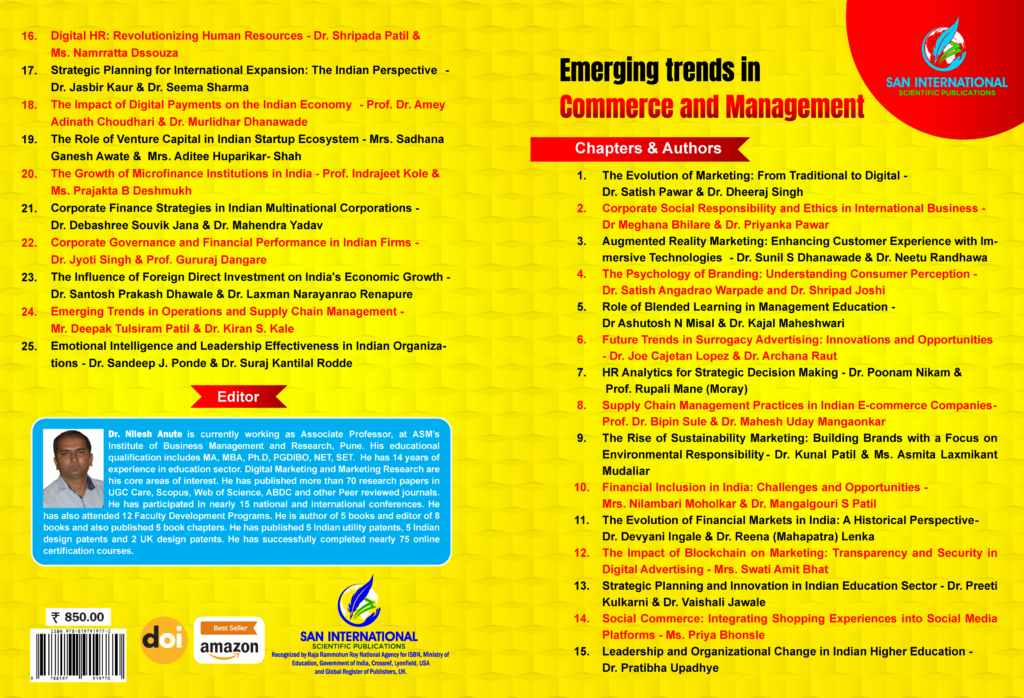Book Title: Emerging Trends in Commerce and Management
Editor: Dr. Nilesh Anute
ISBN: 978-81-979197-7-0
Chapter: 23
DOI: https://doi.org/10.59646/emc23/255
Authors:
Dr. Santosh Prakash Dhawale, Assistant Professor, HSBPVT’S GOI, Faculty of Management, Kashti, Maharashtra, India.
Dr. Laxman Narayanrao Renapure, Assistant Professor, Navsahyadri Group of Institutes, Faculty of Management, Pune, Maharashtra, India.
Learning Objectives
The learning objectives aim to provide a comprehensive understanding of Foreign Direct Investment (FDI) and its different aspects within the Indian context. Firstly, the goal is to provide a clear understanding of the concept and various types of FDI, such as equity investments, reinvested earnings, and intra-company loans. Additionally, they entail analysing the trends and patterns of FDI in India, examining historical data to identify key sources and sectors receiving investments. Additionally, the objectives centre around analysing the effects of FDI on different sectors of the Indian economy, examining the ways in which foreign investments contribute to growth, employment, and technological advancements. Additionally, it involves evaluating the impact of government policies on attracting foreign direct investment (FDI), including incentives, regulations, and reforms aimed at making India a desirable location for international investors. In addition, they strive to recognise the obstacles and possibilities linked to foreign direct investment in India, including regulatory obstacles, market potential, and competition.
References
- Charnes, W.W. Cooper, E. Rhodes, Measuring the efficiency of decision making units, Eur. J. Oper. Res. 2 (6) (1978) 429–444.
- Friedman, Z. Sinuany-Stern, Combining ranking scales and selecting variables in the DEA context: the case of industrial branches, Comput. Oper. Res. 25 (9) (1998) 781–791.
- Haavelmo, The Probability approach in econometrics, Econometrica 12 (1944) iii–115. [54] W.D. Cook, K. Tone, J. Zhu, Data envelopment analysis: prior to choosing a model, Omega 44 (2014) 1–4.
- Pesaran, A. Ullah, T. Yamagata, A bias-adjusted LM test of error cross-section independence, Econom. J. 11 (1) (2008) 105–127.
- Zhou, B.W. Ang, Linear programming models for measuring economy-wide energy efficiency performance, Energy Pol. 36 (8) (2008) 2911–2916.

